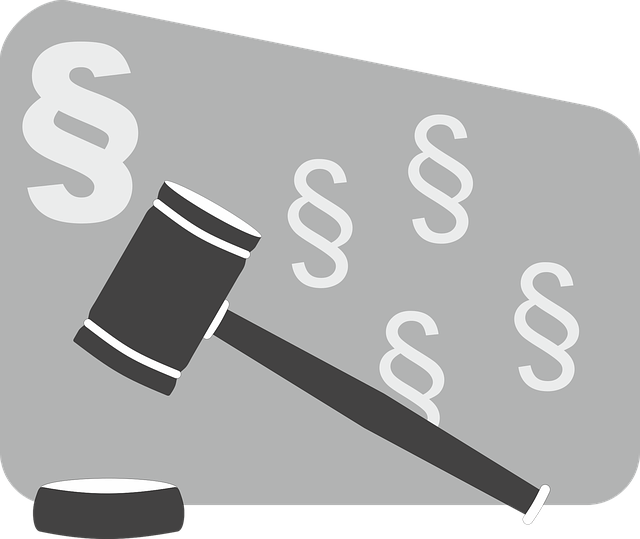Navigating environmental regulations litigation requires a strategic approach for RF-using businesses. Key steps include addressing concerns promptly, conducting internal audits, and keeping transparent records of electromagnetic radiation use to avoid complex, far-reaching investigations. Understanding common legal triggers like non-compliance with environmental standards or permitless projects is crucial. During inquiries, prepare strategically by understanding the scope, gathering relevant documents, engaging specialized legal counsel, and maintaining detailed compliance documentation. Proactive measures such as risk assessments, employee training, regular audits, and staying informed about regulatory changes can mitigate risks and avoid violations in white-collar defense cases.
RF Regulatory Agency investigations can significantly impact businesses, especially those in industries with significant radio frequency (RF) emissions. This article guides you through the intricacies of these investigations, focusing on understanding the process, recognizing common triggers for environmental regulations litigation, and strategic preparation. Learn essential tips on how to navigate this landscape, mitigate risks, and ensure ongoing compliance to protect your business from potential penalties and reputational damage.
- Understanding RF Regulatory Agency Investigations
- Common Triggers for Environmental Regulations Litigation
- Preparing for and Responding to an Investigation
- Mitigating Risks and Ensuring Compliance Going Forward
Understanding RF Regulatory Agency Investigations
RF Regulatory Agency Investigations can be complex and far-reaching processes, impacting businesses across various sectors. These inquiries often arise from allegations of non-compliance with environmental regulations, particularly in industries that utilize Radio Frequency (RF) technologies. Understanding how to navigate such investigations is crucial for both corporate and individual clients facing potential litigation.
When RF agencies launch an investigation, they aim to ensure adherence to standards governing the safe use of electromagnetic radiation. This includes assessing the impact of RF emissions on the environment and human health. For businesses, especially those involved in high-stakes cases, it’s essential to have a comprehensive strategy. Promptly addressing concerns, conducting internal audits, and maintaining transparent records are key steps. By proactively managing potential issues, companies can demonstrate good faith efforts to comply with regulations, which may mitigate the outcome of any legal proceedings.
Common Triggers for Environmental Regulations Litigation
Navigating environmental regulations litigation can be a complex task, but understanding common triggers can help businesses and individuals avoid potential pitfalls. One of the primary catalysts is non-compliance with strict environmental standards set by regulatory agencies. This may include unauthorized discharge of pollutants into water bodies, excessive emissions from industrial plants, or improper disposal of hazardous waste. Such violations often spark investigations by RF Regulatory Agencies, leading to legal repercussions if found culpable.
Another common trigger is the failure to obtain necessary permits before undertaking projects that could potentially impact the environment. Construction activities, land development, and certain industrial operations require environmental impact assessments and approvals. Ignoring these regulatory requirements can result in lawsuits and hefty fines. For his clients involved in high-stakes cases, it’s crucial to remain proactive by conducting thorough due diligence, staying updated on changing regulations, and implementing robust environmental management systems to mitigate the risk of litigation and ensure compliance with navigating environmental regulations.
Preparing for and Responding to an Investigation
Navigating an RF Regulatory Agency investigation requires careful preparation and a strategic response. The first step is to understand the scope of the inquiry and gather relevant documents and evidence promptly. This includes reviewing internal policies, communication logs, and any product specifications related to the RF devices under scrutiny. Engaging experienced legal counsel specialized in environmental regulations litigation is paramount. They can guide corporate and individual clients on how to interpret complex rules and ensure compliance.
A proactive approach involves identifying potential issues before they escalate. Regularly updating records and maintaining detailed documentation of manufacturing processes, testing procedures, and quality control measures can significantly aid in demonstrating adherence to standards. During an investigation, a winning challenging defense strategy may involve presenting well-organized data, refuting allegations with factual evidence, and highlighting successful past performance in similar cases. The goal is to showcase compliance and mitigate any potential penalties or legal repercussions, often culminating in favorable jury trials.
Mitigating Risks and Ensuring Compliance Going Forward
Navigating environmental regulations litigation is a complex task that requires a strategic approach to mitigate risks and ensure compliance going forward. For both corporate and individual clients, understanding the intricacies of these laws is paramount. A robust general criminal defense strategy involves thorough risk assessments and proactive measures to avoid violations. By anticipating potential regulatory issues, companies can implement effective compliance programs that adhere to evolving standards. This not only reduces the likelihood of investigations but also fosters a culture of ethical business practices.
In the realm of white collar defense, proactive measures such as employee training, regular audits, and transparent reporting systems are instrumental in preventing environmental misconduct. Moreover, staying abreast of regulatory changes through industry publications and legal updates enables businesses to adapt their operations accordingly. This holistic approach ensures that companies not only comply with current regulations but also prepare for future challenges, thereby minimizing the risks associated with environmental litigation.
RF Regulatory Agency investigations can significantly impact businesses, making it crucial to understand the process and how to navigate environmental regulations litigation. By identifying common triggers, preparing effectively, and implementing robust compliance strategies, companies can mitigate risks and ensure long-term sustainability. Remember, proactive measures and a deep understanding of these regulations are key to success in today’s regulated environment. Mastery of How to Navigate Environmental Regulations Litigation ensures businesses remain compliant, avoiding legal pitfalls and fostering a culture of responsible environmental stewardship.






